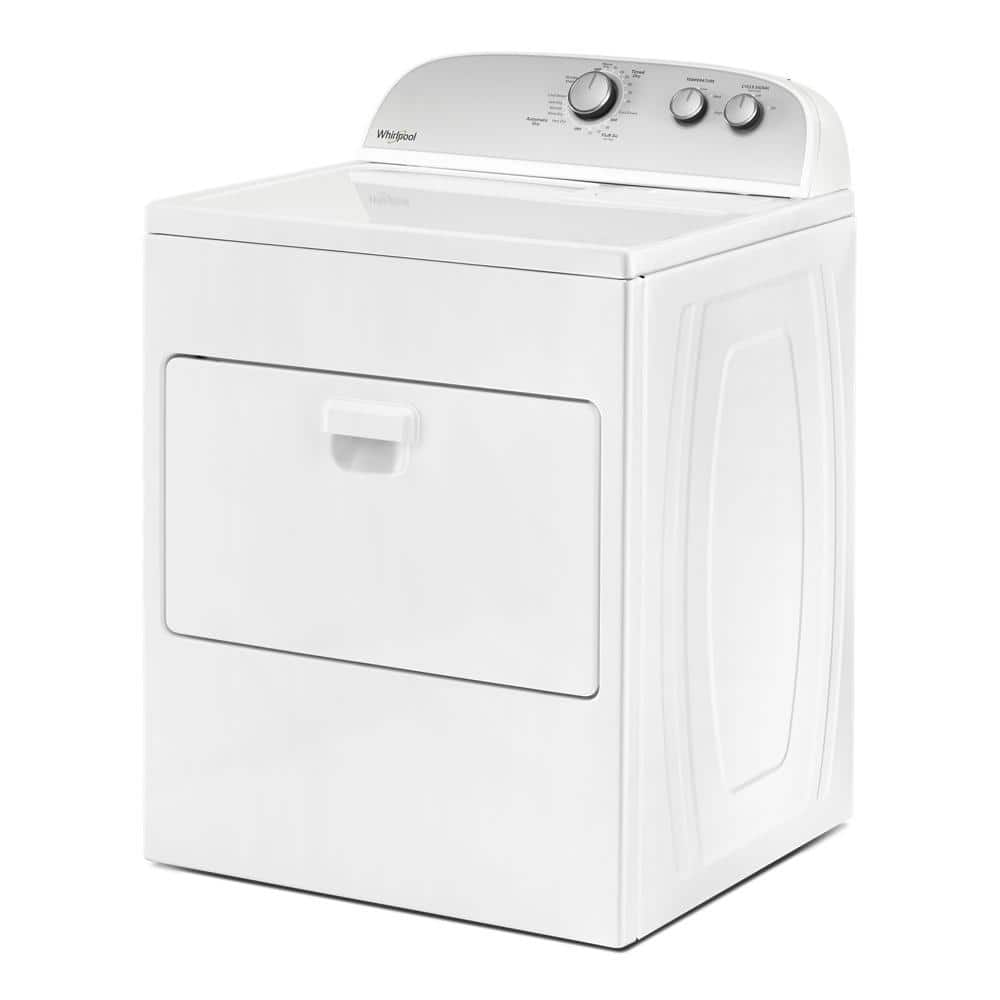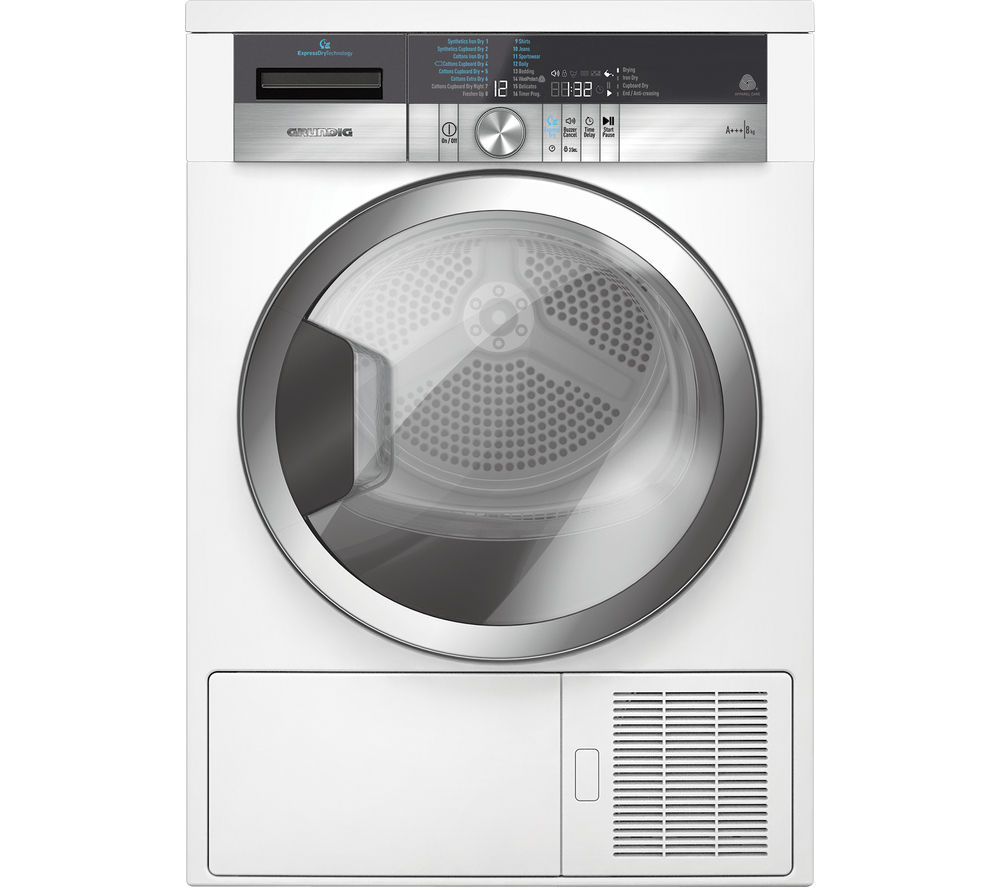Whirlpool 7.0 cu. ft. 240-Volt White Electric Vented Dryer with AUTODRY Drying System
Help prevent overdrying with the AUTODRY drying system. Pairs best with Washer WTW4955HW. Help keep wrinkles from setting with the WRINKLE SHIELD option.
Care for the whole family’s fabrics with this large capacity top load dryer. Choose between the AUTODRY system, which helps prevent overdrying, or Timed Dry, which lets you manually control your drying schedule. Help keep wrinkles from setting in with the WRINKLE SHIELD option and easily transfer loads from the washer to this automatic dryer with a wide-opening hamper door.
- Help prevent overdrying with the AUTODRY drying system that senses when clothes have reached the right moisture content and stops the cycle
- Help keep wrinkles from setting into your clean clothes with intermittent tumbling after the dryer cycle ends with the WRINKLE SHIELD option
- Easily transfer loads from the washer to the dryer and from the dryer to the laundry basket without worrying about clean clothes falling on the floor with this wide-opening door
- Take control of your time. For those occasional times that damp load needs a little extra dry time or when using a drying rack, set the control and you can get your fabrics dried on your schedule
- Choose between three drying temperatures for fabric care that fits your family’s needs
- With a 7.0 cu. ft. capacity dryer drum, there’s plenty of room to easily handle large loads and bulky items
- Designed, Engineered and Assembled in the United States
- 3 Temperature Settings: High, Low, Medium
- 1/3 HP Motor Horsepower
- 14 Dryer Cycles
- Automatic Dry Control
- End of Cycle Signal
- Hamper Door Style
Additional information
| Depth With Door Open 90 Degrees (In) | 42 |
|---|---|
| Door Opening Height x Width (In.) | 13.75 x 25 |
| Product Depth x Height x Width (in.) | 28.25 x 43 x 29 |
| Certifications and Listings | No Certifications or Listings |
| Manufacturer Warranty | 1 Year Limited |






by Pat
Works great but the handle doesn’t quite fit properly
by Barry
We received this dryer via our home warranty program several months ago. So far it has been a great performing dryer. All settings work great. Our previous Whirlpool dryer was purchased in Midlothian VA in 1997 and performed awesomely with regular maintenance for all 24 years. We hope this new dryer performs as well.
by Judy
I bought this three months ago and I’m happy to use it without problem.
by Laura
So glad I held out to get the “Matching washer and dryer”. Both work so well. It’s a pleasure to do laundry.
by Kathy
We have hard our dryer about two months and it is amazing. It runs quietly and is very efficient. The cool down feature is very nice, no more hot buttons and zippers. I never need to add another cycle because the clothes weren’t completely dry the first time around.
by Kay
This dryer is everything you expect to find in a dryer, it’s simple basic and to the point. It dries clothes what more do you want. It has a few extra features here and there, wrinkle shield, low, med, high settings. But if you are like me you usually turn it on high set the timer to max and let her fly …you don’t need any fancy gadgets or features you’ll never use… Just dry clothes.. thank you Whirlpool.
by Teresa
Very pleased with the dryer, however when it was delivered the back of it was pulled and bent, NO discount or replacement was offered.
by Joseph
My appliances came with my new construction home and they have been great. My only complaint about the dryer is that the low temp heat is very hot still. I cant immagine medium or high I feel like it would melt your clothes. I wish there was a longer setting for air fluff. Other than that the capacity is great and it does the job!